In the first of a short series on Australian housing, Elias Visontay examines how Victoria’s planning system is failing residents and the environment
When Jade Seenarain and his wife Aideanna bought the plot for their home in Truganina in Melbourne’s west in 2015, the couple thought they were buying into a leafy, suburban dream.
They planned to build their ideal home and thought their lives would look something like the highly idealised vision presented by the Elements estate developers.
Their children, Amilia and Aryan, would walk to the “future” prep-to-year-9 Catholic school, marked in the advertising material as just a few blocks away. They would commute to work each day by walking to the “future Truganina train station”. And on their way home they would get groceries at the shopping centre, which was to be built at the entrance to the estate.
But three years after moving into their four-bedroom, two-bathroom, double-driveway home, reality bears little resemblance to the life the Seenarains thought they would be living.
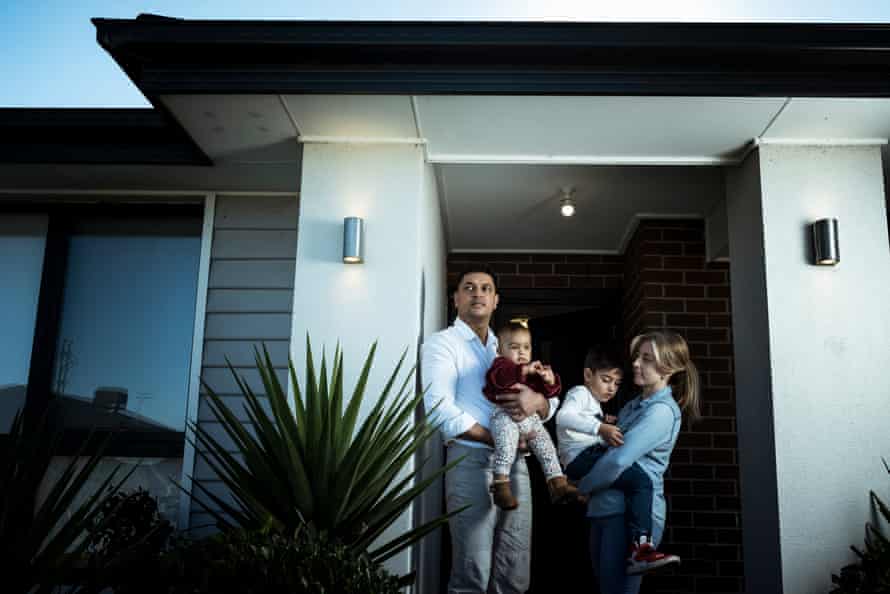
“It’s a broken dream,” Jade Seenarain says.
Since the couple moved in, plans for a local primary school have been derailed, and plots of land still lie empty while residents wait for shops, services and infrastructure.
Urban planning experts say such problems are common across Melbourne’s outer suburbs. On some developments, they combine with unimaginative and environmentally unfriendly design to consign many residents to less social, more unhealthy and less environmentally sustainable lives.
The experts argue that the amount of greenery cleared and covered in concrete for new estates has left them more susceptible to the effects of climate change, and that inadequate planning laws have allowed developers to dictate the lifestyles of a generation of future Melburnians.
Radical changes to Victoria’s urban development strategy are now needed, they say, to prioritise the broader idea of affordable living, rather than just affordable housing.
A spokesperson for ID_Land, the developer of Elements, told Guardian Australia that the suburb’s design was in line with relevant planning guidelines that influence development across the state, and that its blueprint was ultimately approved by the council and Victorian Planning Authority.
“The urban design at Elements is informed by the Truganina Precinct Structure Plan (PSP) which was developed throughout 2011-2014 by the relevant government planning authority, the Victorian Planning Authority. This overlaying PSP informs where open space, schools, major roads, commercial property, etc are placed, in addition to density yields,” the spokesperson said.
“Open space is placed in certain locations during the PSP urban design process so that all residents are within a walkable catchment to open space, which could either reside in or outside the Elements boundaries.”
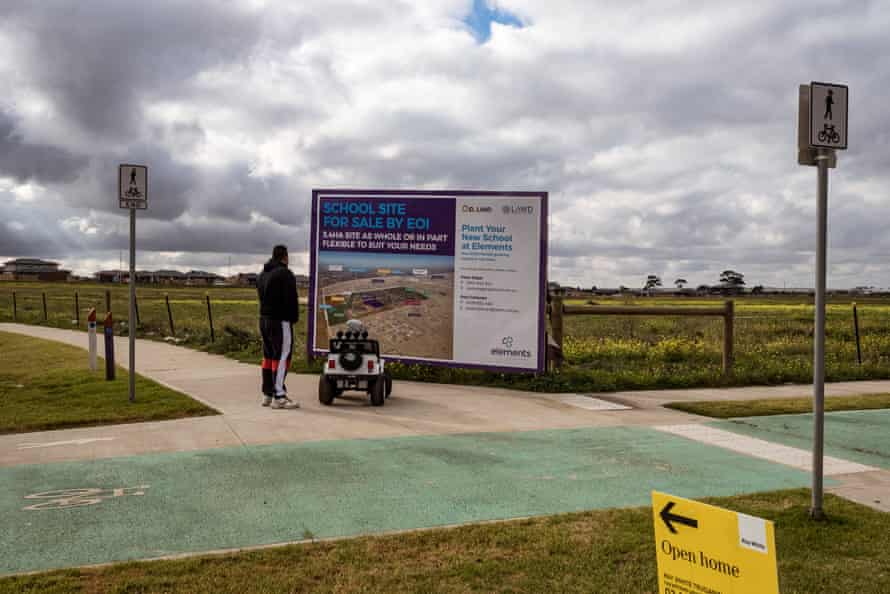
‘It’s impossible to reduce our impact’
Seenarain is proud of his life. After moving to Australia from Mauritius 15 years ago and meeting his wife, together they made the decision to enter the property market with a home they planned to live in for decades.
It was the appeal of an affordable new home, as well as the accessibility of services, that drew them to the Elements estate.
Seenarain and his wife bought their plot of land for about $250,000, and spent just over $300,000 building their home. The house design had to be of a minimum size, and had to be approved by the developer as compatible with neighbouring dwellings.
“It was part of our 20-year plan, to invest in a property [from] which we could walk to school and to the station, so we could commit to public transport,” Seenarain says.
That’s why he was disappointed when in 2020 the Catholic Education Board, which had been set to run a primary school in Elements, pulled out, citing the presence of lead in the soil on the site.
Subsequently, the developer ID_Land applied to have the land set aside for the school rezoned allowing it to build an additional 227 residential lots, on top of the 1,600 homes already planned. ID_Land said at the time it was still hopeful of finding an alternative educational operator for the school site.
Residents, including the Seenarains, were furious. The council challenged the plan at the Victorian civil and administrative tribunal, but lost.

After months of uncertainty and community anger, the Victorian government in June announced its intention to build a high school on the site. There are primary schools in nearby suburbs, but a lack of public transport means parents either have to drive children to and from school, or the children have to walk for about 40 minutes each way on a main road.
ID_Land’s spokesperson said the company has remediated the site and was “incredibly disappointed by the withdrawal of the Catholic Education Office, after initially signing a contract of sale on the site”.
“We are working hard to secure an alternative operator, and in April we began another national expression of interest campaign to take the site to market once more, and secure a provider,” the spokesperson said.
“We have a track record of delivering schools at two other communities throughout Victoria. It remains our priority to secure an education facility for the site, in spite of the Catholic Education Office’s withdrawal.”
It has also become apparent to many homeowners in Elements that the “future Truganina station” remains a proposal without a timeframe for completion or a firm commitment from the government, which owns the land and was responsible for including a possible station in the precinct plan.
Seenarain said he felt the future train station was marketed as a lifestyle feature of living in Elements, and was a key influence in he and his wife’s decision to buy their home in 2015. The Elements website still advertises a “future train station” as it seeks to sell remaining lots, with homes for as little as $500,000.
Bus services remain scant due to a lack of sufficient population to justify them, and the carpark at the next closest train station, Tarneit, becomes clogged by the beginning of the morning peak.
“We want to reduce our impact on the environment, but it’s just impossible, we need our cars,” Seenarain says.
When asked about its decision to include a “future train station” on the map it uses to advertise homes in Elements, ID_Land’s spokesperson said: “Transport links are provided by [Public Transport Victoria], ID_Land simply provides the necessary space/allocation/base infrastructure so the relevant government bodies can deliver public transport links, like bus routes. This allocation has been provided at Elements and it is now up to the government to deliver those transport links.”
“The train station land was put aside as a requirement under the Precinct Structure Plan, which was set by the [Victorian Planning Authority] in conjunction with other local and state government departments. Since then, the state government has taken ownership of the land for the purpose of building a train station. ID_Land is not able to comment on current state public transport policies.”
Tarneit station is about a 45-minute walk from the Seenarains’ house, but Jade can do it in about 20 minutes if he pushes past the end of footpaths and crosses a dry creek bed. “All of a sudden, you’re in mud,” he says, noting uncompleted pavements are common across Elements.
Most days, he travels by car to the north-eastern suburb of Heidelberg, where he works as a business manager. His commute can take between 50 and 75 minutes.
“We’re talking about daily inconveniences, daily disappointment,” he says.
ID_Land said shops are coming and “the town centre will be delivered in 2022 … with [a] full-line supermarket offering – the centre is owned and will be managed by a private retail developer, not ID_Land”.
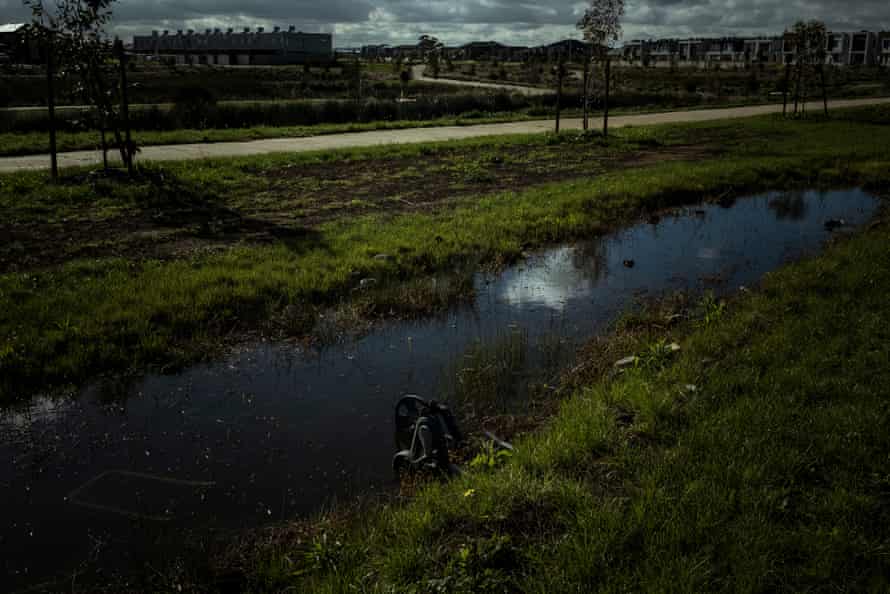
Planning system ‘set up to fail’
The concerns raised by the Seenarains reflect a Melbourne-wide problem: an urgent need for more affordable, environmentally sustainable housing, and the state’s reliance on private residential developers to achieve it.
The mayor of Wyndham City, Adele Hegedich, acknowledges the growing societal costs of car-centric suburbs in her council, which is home to 270,000 people and predicted to grow.
She warns that while homes in the growth area are considered affordable, prices don’t necessarily take into account the mental and physical health impacts of “commuting two hours back and forth to work every day” or the costs “of having to own a car for every adult in the house because you have to drive to the shops or to exercise or to entertainment”.
Michael Buxton, a Melbourne planning veteran and former professor at RMIT and Monash University, is scathing of state planning laws that have “handed over the future design of outer Melbourne to the development industry” and set up “vast swathes of Melbourne to fail”.
Buxton points to a planning system introduced by the Kennett Liberal government in the mid-1990s, and largely unchanged by both sides of politics since, which he says “is not so much a regulatory system as … a development enabling system”.
Development areas are loosely guided on a state level. Chunks of outer Melbourne are carved up and designated as growth corridors by the Victorian Planning Authority.
The VPA then develops Precinct Structure Plans (PSPs), which broadly outline what streets will border new suburbs and which parts of the land will be for residential use, shops, natural features and schools.
At this point, developers can form a specific plan, in accordance with the PSP and planning guidelines, with much more detail about the development.
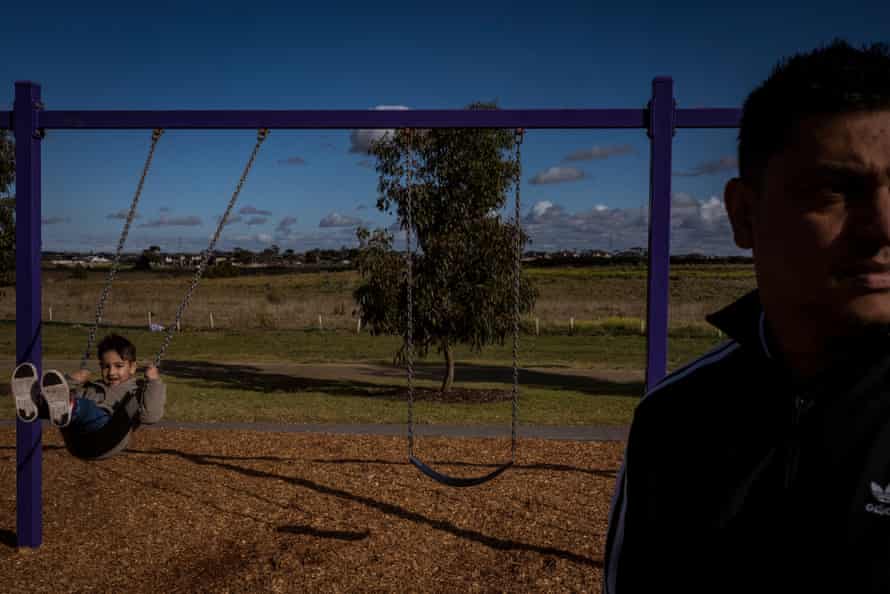
For example, developers can decide if they will build detached dwellings or town houses, and whether the shops they will build in the spaces earmarked for commercial use will be a mall or a retail strip.
A developer’s plan then goes to an independent panel and, if approved, on to the state Department of Environment, Land, Water and Planning, and then to the relevant local council, which issues the legal permits to start construction.
While the planning guidelines are designed to deliver quality of life for residents, Buxton believes most housing estates do not end up being built in line with these principles, as there is no mechanism to enforce them.
As a result, Buxton says, planning ideals such as walkability and 20-minute suburbs – where residents can commute and get most services within 20 minutes of their homes – have been discarded in favour of profit.
He says many estates lack diverse housing types, and specifically higher density unit complexes built around a central retail strip to deliver convenience and local employment. He points to a trend instead for “big box” shopping centres and large detached houses that take up most of the land on their plots.
He also warns there are not enough connections between nearby estates, forcing residents into cars and orienting them towards the Melbourne CBD.
“The development industry has a model that works for them. They put up the same standardised homes on increasingly smaller blocks of land, often years before the retail part of the suburb is built. When you look from the air, it’s mostly roofs and concrete.”
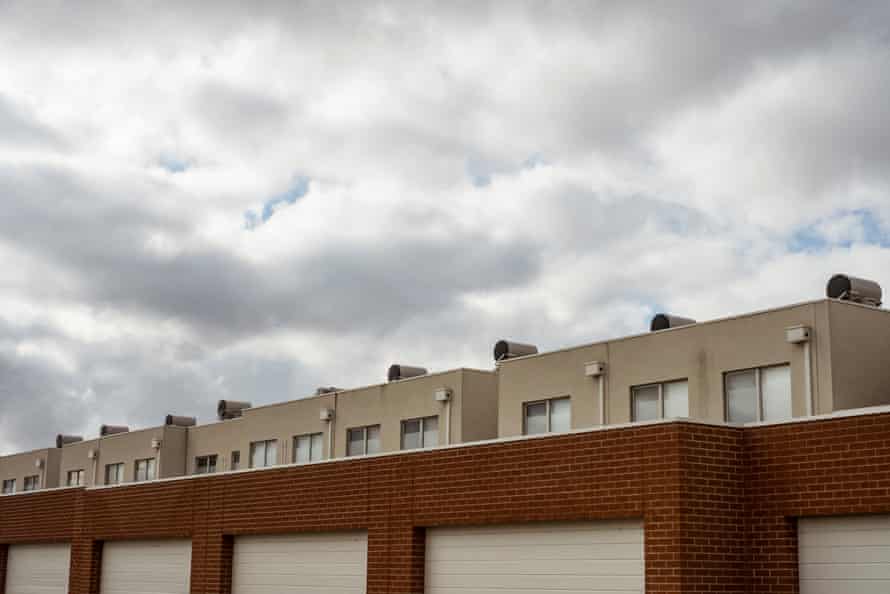
Because uptake is slow and houses are often built before retail and other services, fledgling populations rarely warrant regular public transport services, and a reliance on cars is ingrained in the community, according to Buxton.
“Most high volume builders are very conservative, they’ve made a lot of money out of a particular tradition of rolling out detached houses,” Buxton says. “It may be maximising their profits but it’s lazy, and they’re determining how a future Melbourne functions, it’s just an appalling failure of government to allow this to happen.”
‘It feels very bare’
Experts believe climate change will make life in Melbourne’s new residential estates much more difficult.
Sarah Bekessy, a professor of sustainability and urban planning at RMIT, describes it as a “tragic situation”, where residential development has not taken climate change seriously.
“This is creating short-term affordability, which looks good when you’re buying, but when you ultimately count the time and money spent commuting, the energy costs to heat and cool your home, and the lack of services around you, it’s bloody expensive.”
Specifically, Bekessy says, Truganina and nearby suburbs built over native grasslands clash with nature in a way that will get worse as climate change intensifies. Elements is only one of a number of developments which are being built by different developers under the Truganina PSP approved by the Victorian government in 2014.
“We’re at the absolute end of our grassland, there’s less than 1% left. They can’t offset it any more, there’s nothing left,” Bekessy says. She’s referring to the Victorian government’s 2010 deal to establish a 15,000ha western grassland reserve by 2020 to offset 3,278ha of grasslands cleared for new residential developments. Last year, an audit found the government had acquired just 10% of the land.
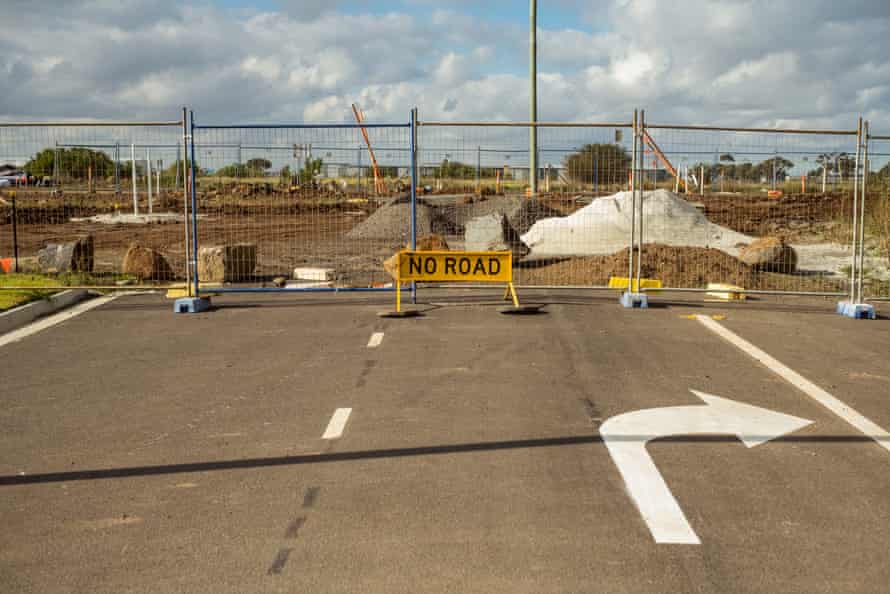
“The status quo for developers is to clear all vegetation when they go into a site, sometimes removing soil to level it, and paving all over it,” Bekessy says. This makes the homes hotter in the summer, with virtually no tall canopy cover to block sunlight.
A tendency towards dark roofs also contributes to higher temperatures.
“There is so much more solar radiation being absorbed in these estates, which are in areas that are already hotter than suburbs closer to the water as they are away from the sea mist which has a significant cooling effect,” Bekessy says.
“In Melbourne, nighttime temperatures can be lowered by eight degrees through conservation and an urban forest strategy. And it’s overnight temperatures that are strongly correlated with people dying from heat.”
Steve Thorne, a former director of urban design within the Victorian government, has analysed the housing density in Elements, as part of research for Charter 29, a group he, Buxton and other design veterans founded to press for planning reform in Victoria.
In a 20ha area at the entrance to Elements, he found a net density of 16.4 dwellings per hectare and zero usable public green space. In addition, he believed the houses are too big and take up too much of the plot in sacrifice of a backyard. The average size of each housing plot in Elements was 416 sq metres, with just 78 sq metres, or 18% of the plot, considered private open space – including the driveway.
This compares with a net density of 29 dwellings per hectare in an area of inner north Melbourne, with an average plot size of 223 sq metres. Even in this mixed terrace housing and unit sample, dwelling on average had about 64 sq metres, or 29% of the plot, as private open space.
Seenarain says he pays more to cool his home in summer compared with his previous homes in Reservoir and Fairfield, which were older.
The levelling and paving over of grasslands, and the tiny backyards, leave the area more susceptible to flooding, as there are few porous ground surfaces to absorb heavy rainfall. In winter, Bekessy says, wind can be more pronounced in suburbs built on grasslands “because there’s no vegetation left to slow the wind down”. There can be added costs to heat these homes during winter given their greater exposure to the elements.
Solar orientation is also a crucial design principle being overlooked in current residential developments, says Thorne. “The key is to be east-west facing, so in the summer, the sun is virtually overhead with very little coming directly in … And in the winter, the sun comes in at an angle, about 28 degrees in Melbourne, which is really low, and shines in through the windows and penetrates the house.”

Many blocks in Elements, including the Seenarains’, face south.
Thorne says correct solar orientation could largely achieve a sufficient energy efficiency rating for homes, but developers instead rely on features such as double glazing and insulation to achieve the six-star energy efficiency rating required in Victoria.
“If you get the orientation wrong you have to do a million expensive things to achieve the efficiency score. They’re delivering more expensive housing, and they’re fighting against nature rather than working with it,” Thorne says.
Bekessy believes the most compelling argument for overhauling urban planning practices is that it would make a sustainable lifestyle possible.
“We know there are health and wellbeing benefits if you live in a street with more biodiversity. They have lower incidence of allergies and behavioural issues for children, there are cognitive improvements too. There’s also evidence that you’ll sleep better, and there’s lower incidence of mental illness and loneliness.”
The solution?
Bekessy believes key sustainability measures such as green roofs (topped with vegetation), more green spaces, taller tree cover and ratios of how much of a block a house takes up, should all be incorporated into the planning process. She also believes selling the idea of higher density will be crucial.
“There’s an interesting planning philosophy that you should be able to yell at your kids from the balcony, and that this creates liveable streets and community, so about four storeys high. Sustainable midrise has to be the model,” Bekessy says.
Buxton acknowledges the state government’s need for tens of thousands of new affordable houses to cater for a predicted surge in Melbourne’s population, but he believes the current laws and a fragmented approvals process are allowing developers to ignore crucial planning objectives that deliver the best environmental outcomes, as well as a cheaper, more social and healthy way of life for residents.
He wants to see it made mandatory for developers to address critical design principles, such as a range of housing types and sizes, higher density, and planning in line with public transport that already exists or has a firm government construction commitment.
Buxton also supports a streamlined approvals process that includes relevant transport, service and infrastructure authorities, so it is clearer whether submitted plans are in synch with existing commitments and neighbouring suburbs.
“The government knows these planning principles, they could enforce these tomorrow and we’d get a completely better outcome,” he says.
But can the existing estates be fixed? Buxton is pessimistic.
“Once they’ve been developed, they’re almost impossible to retrofit. They’re there for life, we can’t tear up suburbs en masse.”